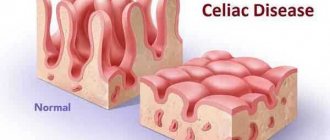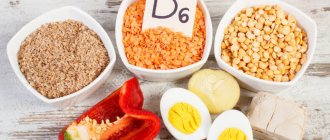Biological role
The main value for human life is phosphoric acid, which is needed for the metabolism of fats, the construction of enzymes, the synthesis and breakdown of carbohydrates. Together with calcium, the element forms tooth enamel and bone skeleton.
Benefits of phosphorus: normalizes energy metabolism; regulates acid-base balance; strengthens bones and teeth; reduces pain due to arthritis; promotes body growth; promotes cell division; improves glucose absorption; participates in the encoding and storage of genetic information, muscle contraction, and conduction of nerve impulses.
Creatine phosphate and adenosine triphosphoric acid act as energy accumulators necessary for the functioning of the body. A decrease in the amount of these compounds leads to paralysis of any type of activity - from mental to physical.
Vitamins A, , F, hydrochloric acid, iron, manganese, potassium, calcium, proteins enhance the absorption of phosphorus. Calciferol, corticosteroids, thyroxine, parathyroid hormone, estrogens, androgens, magnesium and aluminum, together with excessive sugar consumption, on the contrary, reduce the concentration of the microelement in the body.
The daily requirement for phosphorus for an adult is 800 milligrams. At the same time, 1200 milligrams of the compound are present in the average menu of people every day. Intense sports, pregnancy, and insufficient protein intake cause an increased need for the body in microelements, which reaches 1600 – 2000 milligrams per day.
The absorption of phosphorus depends on the calcium content in the diet, the ideal ratio of compounds is 1: 1. Additional intake of the microelement accelerates the leaching of lactic acid from muscle tissue, which is especially important for athletes.
By-products
If you are wondering which foods contain large quantities of phosphorus, then you should pay attention to offal. Organ meats such as brain and liver are excellent sources of highly absorbable phosphorus.
One 85 gram serving of roasted cow brain contains almost 50% of the RDA for phosphorus (12).
Chicken liver, which is often used to make pâté, contains 53% of the RDA for phosphorus per 85 grams (13).
Organ meats are also rich in other essential nutrients such as vitamin A, vitamin B12, iron and trace minerals. They can be a delicious and nutritious addition to your diet.
Summary:
Organ meats are incredibly nutritious and contain large amounts of phosphorus and other vitamins and minerals. The brain and liver contain approximately 50% of the RDA for phosphorus per 85 grams.
Phosphorus deficiency
Typical causes of microelement deficiency in the body:
- Starvation.
- Food poisoning.
- Metabolic disorders due to dysfunction of the renal tubules and parathyroid glands, diabetes mellitus, alcoholism.
- Pregnancy, breastfeeding, growth phase, increased physical activity.
- Insufficient intake of microelements from food. A deficiency of the substance is often observed in individuals who eat plant foods that grew in soil with a low content of phosphorus compounds.
- Abuse of carbonated drinks.
- Intake of calcium, barium, magnesium, aluminum into the body. Ions of these metals react with phosphorus to form insoluble compounds that remove microelement P from metabolism.
- Chronic kidney diseases.
- Artificial feeding.
Symptoms of phosphorus deficiency in the body:
- weakened immunity and frequent colds;
- periodontal disease, rickets;
- hemorrhagic rashes on the skin and mucous surfaces;
- exhaustion, lack of appetite;
- fatty liver;
- mental illness;
- weakness, feeling of weakness;
- poor concentration;
- pain in muscle, bone tissue, joints;
- dystrophic changes in the myocardium;
- memory impairment;
- irregular breathing;
- anxiety, feeling of fear;
- changes in weight;
- numbness or increased sensitivity of the skin;
- irritability, depression.
A long-term lack of phosphorus in the body provokes the development of arthritis, causes apathy, convulsions, trembling, breathing problems, reduces performance, leads to nervous exhaustion, and softening of bones.
It is better to compensate for microelement deficiency with the help of food or nutritional supplements. Chronic phosphorus deficiency is eliminated by introducing the following drugs into the patient's body: ATP, phytin, phosphocoline, riboxin, phosphrene, lecithin, sodium phosphate or phytoferrolactol.
Dairy
It is estimated that 20–30% of the phosphorus in the modern human diet comes from dairy products such as cheese, milk, cottage cheese, and yogurt (26).
Just one 28-gram serving of Romano cheese contains 213 mg of phosphorus (30% of the RDI), and one 245-gram serving of skim milk contains 35% of the RDI (27, 28).
Low-fat and low-fat dairy products, such as yogurt and cottage cheese, contain high amounts of phosphorus, while full-fat dairy products contain the least amount (29, 30, 31).
Summary:
Low-fat dairy products such as milk, cottage cheese and yogurt are excellent sources of phosphorus, providing at least 30% of the RDI per serving.
Excess phosphorus
An overdose of a microelement in the body affects the kidneys: the process of stone formation in them starts, in addition, anemia and leukopenia develop, bones weaken, and there is a threat of osteoporosis.
The greatest danger to humans is excess white phosphorus. An increased content of the compound in the body causes headache, vomiting, burning sensation in the stomach, mouth, jaundice, and weakness. In chronic poisoning, the nervous and cardiovascular systems are affected and calcium metabolism is disrupted.
Unlike white phosphorus, red phosphorus is harmless. Chronic excess of the substance in the body causes pneumonia.
Causes of phosphorus overdose:
- excessive consumption of carbonated drinks (lemonade), canned foods;
- unbalanced diet, oversaturated with protein components;
- metabolic disease.
Today, excess phosphorus in the human body is much more common than its deficiency. The reason for this statistics is the widespread use of trace element compounds in the food industry (E338, E340 – E343). These phosphates are required for proper storage of bulk food products (dry cream and milk, coffee, cocoa). In addition, the compounds provide a soft consistency to processed cheeses, prevent crystallization of condensed milk, increase the shelf life of meat and milk products, increase the weight and volume of sausages, and acidify soft drinks.
Signs of an overdose of phosphorus in the body:
- hemorrhages, decreased blood clotting;
- salt deposits;
- decreased immunity (leukopenia);
- development of osteoporosis;
- minor hemorrhages on the retina;
- diseases of the digestive tract, especially the liver;
- anemia.
Best materials of the month
- Coronaviruses: SARS-CoV-2 (COVID-19)
- Antibiotics for the prevention and treatment of COVID-19: how effective are they?
- The most common "office" diseases
- Does vodka kill coronavirus?
- How to stay alive on our roads?
Remember, excess phosphorus causes calcium deficiency and also impairs magnesium absorption. Therefore, to eliminate the symptoms of the consequences of an overdose, doctors prescribe aluminum hydroxide, which binds and slows down the absorption of phosphates.
Pork
A typical 85 gram serving of cooked pork contains 25-32% of the RDI for phosphorus, depending on the cut.
Pork chops contain the least amount of phosphorus, while pork tenderloin contains the most. Even bacon is a good source, containing 6% of the RDI per cut (9, 10, 11).
As with poultry, cooking method can affect the phosphorus content of pork.
Roasting retains 90% of the phosphorus, but boiling can reduce levels by about 25% (8).
Summary:
Pork is a good source of phosphorus, containing about 200 mg per 85 gram serving. Roasting is the best way to preserve phosphorus content.
Soybeans
Soy can be used in many forms, some of which contain more phosphorus than others.
Ripe soybeans contain the most phosphorus, while edamame (boiled or steamed unripe soybeans) contains 60% less of this mineral (66, 67).
Mature soybeans can be boiled or roasted. Their consumption provides the body with more than 100% of the RDA per 172 gram serving (68).
Fermented soy dishes such as tempeh and natto are also good sources, providing 212 mg and 146 mg per 85 gram serving, respectively (69, 70).
Most other cooked soy products, such as tofu and soy milk, are not as good sources of phosphorus, containing less than 20% of the RDI per serving (71, 72).
Summary:
Whole soybeans and fermented soy products are good sources of phosphorus, providing up to 100% of the recommended daily intake per serving.
Whole grains
If you're wondering which foods are high in phosphorus, look to whole grains and grain-based foods. Many whole grains contain phosphorus, including wheat, oats and rice.
Whole wheat contains the highest amount of phosphorus (291 mg per 194 gram serving). It is followed by oats (180 mg per 234 gram serving) and rice (162 mg per 194 gram serving) (43, 44, 45).
Most of the phosphorus in whole grains is found in the outer layer of the endosperm, known as the aleurone, and the inner layer, called the germ (46).
These layers are removed when the grains are cleaned, so whole grains are good sources of phosphorus, but refined grains are low in this mineral (47, 48).
However, like seeds, most of the phosphorus in whole grains is stored as phytic acid, which is difficult for the body to digest and absorb.
Soaking, sprouting, or fermenting grains can break down some of the phytic acid and make more phosphorus available for absorption (46, 49, 50, 51).
Summary:
Whole grains such as wheat, oats and rice contain a lot of phosphorus. Soaking, sprouting or fermenting the grains can make it more digestible.
Nuts
Most nuts are good sources of phosphorus, but Brazil nuts top the list. Just a 67-gram serving of Brazil nuts provides more than 65% of the RDA for adults (36).
Other nuts that contain at least 40% of the RDI per 60 to 70 grams include cashews, almonds, pine nuts, and pistachios (37, 38, 39, 40).
They are also excellent sources of plant-based protein, antioxidants and minerals. Regular consumption is associated with improved heart health (41).
Like seeds, most of the phosphorus in nuts is stored as phytic acid, which is not digested by humans. Soaking may help, although not all researchers agree (42).
Summary:
Many nuts, and especially Brazil nuts, are good sources of phosphorus, containing at least 40% of the RDI per 67 gram serving.
References
- Simerville, J., Maxted, W., Pahira, J. Urinalysis: a comprehensive review. Am Fam Physician., 2005. - Vol. 71(6). - P. 1153-62.
- Chernecky, C., Berger, B. et al. Laboratory Tests and Diagnostic Procedures. Saunder Elsevier, 2008.
- Fauci, A., Ksper, D., Longo, E. et al. Harrison's principles of internal medicine. The McGraw-Hill Companies, 2008.
- Pettifor, J. What's new in hypophosphataemic rickets? Eur J Pediatr., 2008. - Vol. 167(5). - P. 493-9.
- Wolf, M. Forging forward with 10 burning questions on FGF23 in kidney disease. J AmSocNephrol., 2010. - Vol. 21(9). - P. 1427-35.
Beans and lentils
Legumes such as beans and lentils are also high in phosphorus, and their regular consumption is associated with a lower risk of many chronic diseases, including cancer (57, 58).
Just one 198 gram serving of cooked lentils contains 51% of the RDA for phosphorus and more than 15 grams of fiber (59).
Beans and other legumes are also rich in this mineral, especially Great Northern beans, chickpeas, Navy beans, and pinto beans, which contain at least 250 mg per serving (164 to 182 grams) (60, 61, 62, 63).
Like other plant sources of phosphorus, the mineral's availability can be increased by soaking, sprouting, and fermenting legumes (46, 64, 65).
Summary:
Legumes such as beans, lentils and chickpeas, especially when pre-soaked, sprouted or fermented, are rich sources of phosphorus, containing at least 250 mg per serving (about 160-200 grams).
Amaranth and quinoa
While amaranth and quinoa are often referred to as "grains", they are actually small seeds and are considered pseudocereals.
One 246-gram serving of cooked amaranth contains 52% of the RDA for phosphorus for adults, and the same volume of cooked quinoa contains 40% of the RDA for phosphorus (52, 53).
Both of these foods are also good sources of fiber, minerals, and protein and are naturally gluten-free (54, 55).
As with other seeds, soaking, sprouting, and fermentation can increase phosphorus availability (56).
Summary:
Ancient grains such as amaranth and quinoa are highly nutritious and good sources of phosphorus. One 246 gram serving contains at least 40% of the recommended daily intake of phosphorus.
Sunflower and pumpkin seeds
Sunflower and pumpkin seeds also contain high amounts of phosphorus.
One 28-gram serving of roasted sunflower seeds or pumpkin seeds contains approximately 45% of the RDA for phosphorus (32, 33).
However, up to 80% of the phosphorus present in seeds is stored in the form of phytic acid, or phytate, which humans cannot digest (34).
Soaking seeds until they germinate can help break down phytic acid, freeing up some of the phosphorus for absorption (35).
Pumpkin and sunflower seeds can be used as a snack, sprinkled on salads, mixed into nut butters, or used in Italian pesto sauce. They are also a great alternative for people with peanut or tree nut allergies.
Summary:
Sunflower and pumpkin seeds contain high amounts of phosphorus in the form of phytic acid, which humans cannot digest. Sprouting seeds can help make phosphorus available for absorption.










